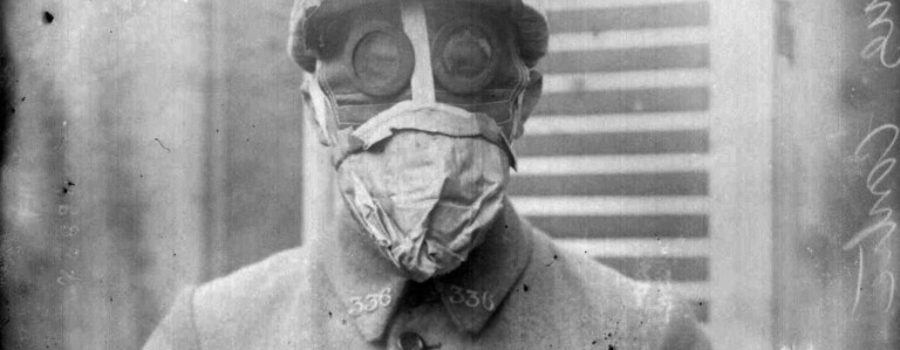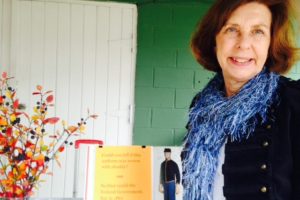Walt Whitman once said, “Keep your face always turned toward the sunshine and shadows will fall behind you.”
But WWI forever changed looking toward the sunshine.
The new military trench warfare of 1914 – 1919 saw soldiers popping their heads up out of the trench to look ahead—only to have parts of their faces blown off by enemy machine gun fire. Many soldiers survived, but at what cost?
Eight million soldiers died in WWI, 21 million were wounded, and over 20,000 in France alone were so badly disfigured that their lives were virtually destroyed. Returning home without a nose, or lips, or half of their face made the veterans visual outcasts in their own homeland. And since plastic surgery was not yet an advanced science, there was little hope for them to ever resume a normal life.
Living in France toward the conclusion of WWI, Anna Coleman Ladd, a sculptress from Boston, Massachusetts, saw a way to use her artistic talents. She would create masks for the mutilés de la face, men whose faces had been horribly disfigured by shrapnel, bullets, and/or flamethrowers.
With funding from the Red Cross, she opened a studio in Paris that would produce facial masks to hide the deformities inflicted by war.
Her first task was to get to know the men and have them feel safe in her studio. She talked with each patient about his family, his siblings, his life before the war. If he had any pre-war photographs of himself, she studied those, too.
Next, she would construct a plaster mold of the man’s face, filling in the parts that had been blown away in combat. Knowing that she could only give the patient one expression, she tried to construct each mask to be as nearly a replica of the victim’s former face as possible.
Once the plaster mask was complete her next step was to use a thin sheet of galvanized copper to cover the sections of the mask which hid the deformities. Finally, after many adjustments, she would have the veteran wear the copper mask in the studio while she painted it with flesh-tone enamel hardened onto the copper. The last step was to glue on any needed hair that could be trimmed to look like eyebrows, eyelashes, or a mustache.
The veteran simply hooked the mask onto his face by means of eyeglasses. The result was life changing. One man told Anna that he had not returned to his family after his discharge because the lower half of his face had been so badly mutilated, he was afraid he would scare his wife.
Each mask took approximately one month to complete. By the time the Red Cross lost the funding for the studio, Anna Coleman Ladd in two years had changed the lives of over 185 veterans, giving them the gift of being able to be seen again in public and return to their families.
After the war, Anna returned to Boston with her husband and reestablished herself as a neo-classical sculptress, creating many famous works such as the Triton Babies sculpture in the Boston Public Garden fountain.
But the French never forgot her kindness. In 1932 she was awarded the Cross of Chevalier (Knight) of the French Legion of Honor.
Not one of her masks still exist, nor the records of the names of the men she treated.
Modern day soldiers still experience the tragedy of facial disfiguration from combat wounds. But, today, those veterans receive facial prostheses made of silicone and acrylic, designed on a computer and held in place with implants.
Back in 1919 Anna Coleman Ladd could not have conceived of a world where surgical reconstruction would reach the heights of medical expertise. All she knew was that thousands of brave soldiers had sacrificed their faces in the war, and that she, in her own small way, could help restore some of their lives.
Whoever said that one person can’t make a difference? They can. Ask the 185 French men who were treated by one strong woman, Anna Coleman Ladd.
Thank you to Ann Livoti for sharing Anna’s amazing story with me.
Happy New Year to everyone. If you enjoyed this month’s blog, please do two things: 1) become a follower by signing up on the right sidebar and 2) encourage a friend to become a follower as well. I’ll be hard at work researching other amazing women whose stories deserve to be told, and finishing my third novel. You can check out my other novels at: Cut From Strong Cloth www.amzn.com/1940553024 and Last Curtain Callwww.amzn.com/1940553067.
Do you have a strong woman I should know about? Please leave a response and tell me!
Linda




